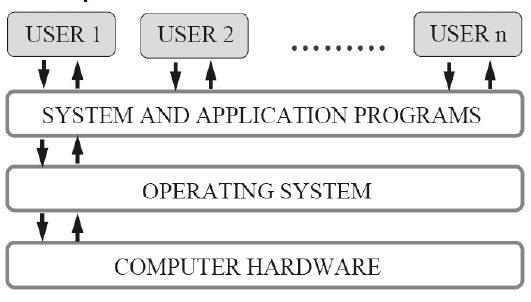Uses of Computer Network
Computer networks play a crucial role in modern society, facilitating communication, data sharing, and resource access among devices. They are used in various industries and settings, including business, education, healthcare, and entertainment. Computer networks enable the sharing of information and resources, improving efficiency and productivity. They also provide connectivity for devices to access the internet, enabling online communication and services. Overall, computer networks are essential for modern communication and information exchange.
What
is Computer Network?
A computer network is a group
of interconnected computers that communicate with each other to share resources
and information. The primary uses of computer networks are to facilitate
communication, enable resource sharing, provide remote access, and collaborate.
Computer networks are essential for businesses, educational institutions, and
individuals who rely on technology to connect with others and access resources.
Uses
of Computer Network
There are multiple uses of
computer network including:
·
Communication: Computer
networks enable individuals and organizations to communicate with each other
using various methods such as email, messaging, and video conferencing.
·
Resource sharing: Networks
allow users to share resources such as printers, scanners, and files, which can
improve efficiency and reduce costs.
·
Remote access: Networks
enable users to access information and resources from anywhere in the world,
providing greater flexibility and convenience.
·
Collaboration: Networks
facilitate collaboration by enabling users to work together on projects, share
ideas, and provide feedback in real time.
·
E-commerce: Computer
networks are used extensively in e-commerce, enabling businesses to sell
products and services online and process payments securely.
·
Education: Networks are
used in educational institutions to facilitate distance learning, provide
access to educational resources, and enable collaboration among students and teachers.
·
Entertainment: Networks are
used for entertainment purposes such as online gaming, streaming movies and
music, and social media.
Applications
of Computer Network
There are multiple
applications of computer networks including:
·
Business applications: Computer
networks are widely used in businesses to improve communication, share
resources, and enable remote access.
·
Educational applications: Computer
networks are used extensively in educational institutions to facilitate
distance learning, provide access to educational resources, and enable
collaboration among students and teachers.
·
Healthcare applications: Computer
networks are used in healthcare to store and share patient information,
enabling healthcare professionals to provide more personalized care.
·
Entertainment applications: Computer
networks are used for entertainment purposes such as online gaming, streaming
movies and music, and social media.
·
Military applications: Computer
networks are used in military applications to provide secure communication and
information sharing among military personnel.
·
Scientific applications: Computer
networks are used in scientific research to facilitate collaboration among
researchers and share data and information.
·
Transportation applications: Computer
networks are used in transportation to manage traffic, track vehicles, and
improve transportation efficiency.
·
Banking and finance applications: Computer networks are used in banking and finance to
process transactions, share information, and provide secure access to financial
services.
Advantages
of Uses of Computer Networks
Here are the advantages uses
of a computer network:
·
Improved communication and
collaboration.
·
Cost savings through
resource sharing.
·
Better data management and
security.
·
Increased flexibility with
remote access.
·
Enhanced productivity and
efficiency
Disadvantages
of Uses of Computer Networks
Here are the disadvantages
uses of a computer network:
·
Security risks and
potential for data breaches.
·
Technical issues and
maintenance challenges.
·
Increased vulnerability to
viruses and malware.
·
Potential for decreased
privacy and confidentiality.
Conclusion
Computer networks are integral to modern society, enabling communication, data
sharing, and resource access among devices. They play a vital role in various
industries and settings, improving efficiency, productivity, and connectivity.
Understanding the uses of computer networks is essential for realizing their
full potential and leveraging them for improved communication and information
exchange.
FAQs
related to Uses of Computer Network
Here are some of the FAQs
related ti Uses of Computer Network:
1. What are the primary uses
of computer networks in business?
Computer networks in business are used for communication (email, messaging),
data sharing (file sharing, collaboration), resource sharing (printers,
scanners), and internet access for research and online services.
2. How are computer networks
used in education?
In education, computer networks are used for online learning platforms,
communication among students and teachers, access to digital resources, and
administrative tasks such as attendance and grading.
3. What role do computer
networks play in healthcare?
Computer networks in healthcare are used for electronic health records (EHR),
telemedicine (remote consultations), medical imaging sharing, and communication
among healthcare professionals.
4. How are computer networks
used in entertainment?
In entertainment, computer networks are used for streaming services (Netflix,
Spotify), online gaming, social media platforms, and digital content
distribution.
5. What are some security
considerations for computer networks?
Security considerations for computer networks include data encryption,
firewalls, antivirus software, access controls, and regular security audits to
protect against cyber threats and unauthorized access.
6. How do computer networks
enable remote work?
Computer networks enable remote work by providing connectivity for employees to
access company resources (emails, files, applications) from remote locations,
facilitating communication and collaboration among remote teams.
Reference:



Comments
Post a Comment